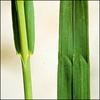An Introduction to Smooth Brome Grass Hay for Horses
Submitted by: Tanner Farms
Phone: 240-401-4856
Email Address: tannerfarms(at)gmail.com
Date Added: 2/4/2016
An Introduction to Smooth Brome Grass Hay for Horses
Brought to you by T. Ziegler at Tanner Farms
One of the more stressful aspects of owning a horse is making sure you have quality hay that that your horse will eat rather than push around, or worse yet, pee on as a symbol of dissatisfaction. Fortunately, as a horse owner or barn manager, you control what you buy and what you feed. And as most of us are familiar with the phrase “you get what you pay for”; it applies to hay as well. So if you’re paying for “cattle quality” hay or lower grade hay, that’s pretty much what you should expect – a late cut hay that is stalky, low in protein, and has little nutritional value. The horses may not even eat it; worse yet, it may be moldy or dusty. Therefore, knowing the type of Grass Hay (hay is a grass; alfalfa is a legume), when it was cut (both day/month of the year and time of day) and moisture when baled, can initially tell you a lot about the hay without visually inspecting it. Coupled with the hay analysis, you’ll at least know what’s in your hay and if it’s suitable.
Grass Hays
Most grass hays can be divided into two basic groups, cool-season and warm-season. The most common cool-season grasses in the United States are timothy, orchard grass, ryegrass, fescue, redtop, reed canary grass, and occasionally bluegrass in the East. Warm-season grasses include Bermuda grass (referred to as coastal), brome grass, and teff.
Cool season grasses, like Orchard Grass, mature early in the spring, so should ideally be harvested in May. Timothy blooms a little later, so harvest should be anywhere from late May through mid-June. The later in the growth stage hay is cut, the stemmier it gets, and less nutritious and digestible it becomes. Overly mature hay will see higher levels of crude fiber and lignin which decreases feeding value and the ability for a horse to digest it. Overly mature Timothy is easily identified by the length of the head on the stem. Usually good quality Timothy is coming out of the boot stage, so the head usually shouldn’t be more than 2-3 inches.
Smooth Brome Grass
What I think a lot of horse owners overlook is the warm season grasses, and in particular Smooth Brome Grass. Tests show the many benefits – Smooth Brome Grass (“Brome Grass”) is nutritious and highly palatable to horses since it has a high leaf-to-stem ratio – more leaves and few stems. It can have a feeding value comparable to cool season grasses such as Timothy and to Bermuda grass. It is a reasonably desirable choice of hay for horse owners. Additionally, since it matures later in the season, the weather variables (rain, cold, etc.) during harvest are considerably reduced and you will likely:
a) Find more consistency in nutritional value from a variety of sources.
b) Have a leafy, more palatable hay for your horse;
c) Have less risk of getting moldy hay (warmer weather, less risk of rain), all things equal;
d) Have more nutritious hay since it’s less likely to be overly mature;
e) Have a good hay choice for older horses that desire softer hay, especially when a second cut of orchard grass is hard to find.
I’ve seen many different message boards and articles from horse owners about brome hay, its palatability, and how their horses have taken to it so quickly. My favorite quote from the horse owner after trying Brome for the first time after mostly feeding Orchard Grass: “Maybe Brome Hay is like candy, or maybe it just tastes better…?”
Roughage / Hay is the most important dietary component for horses; they consume 1-2% of their body weight in forage daily. Brome Grass Hay is a great feed source not only for younger and active horses, but also suits the needs for older and lightly worked horses, horses kept in stalls, and those benefiting from slow, all-day feeding – it provides the additional fiber less-active horses need for chewing and weight management. Like any hay, however, only the hay analysis will gives you a true picture of the nutrient content of your hay, but at least with Brome Grass, you should find a leafy and palatable hay that is suitable for horses young and old.
|
Click Image to View Larger


|





